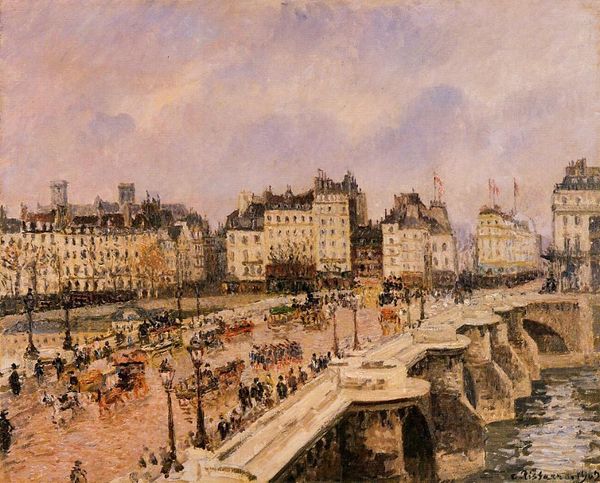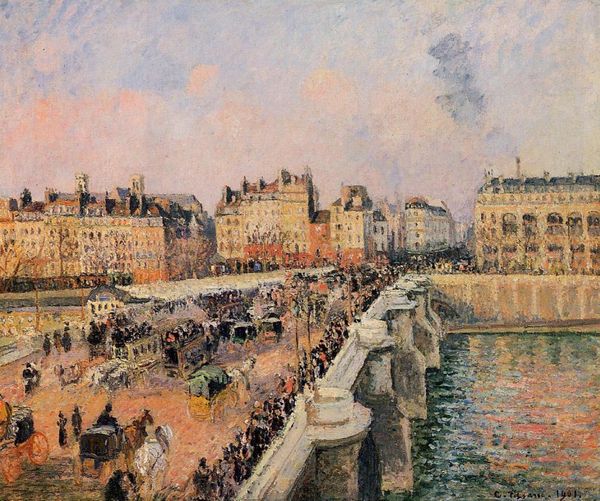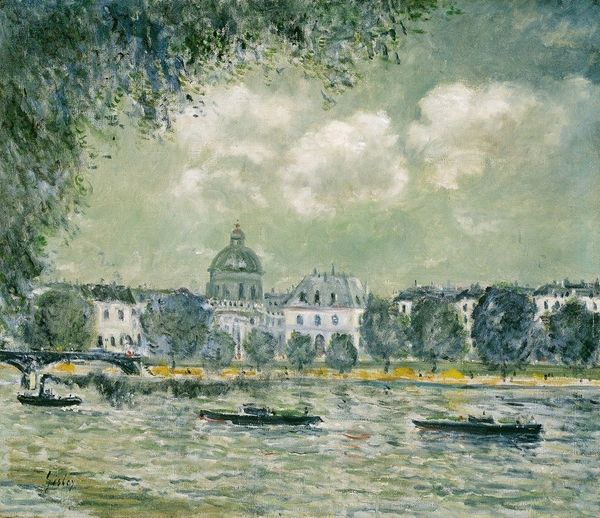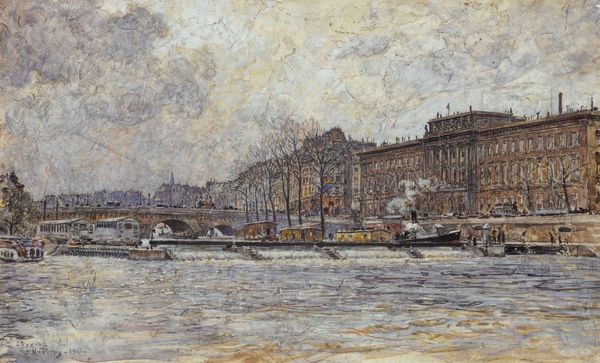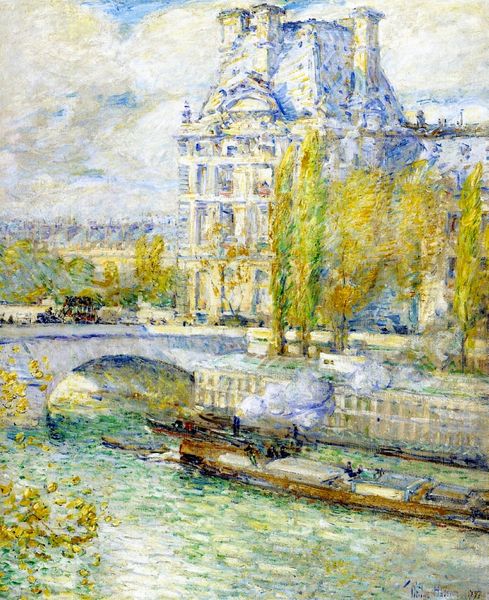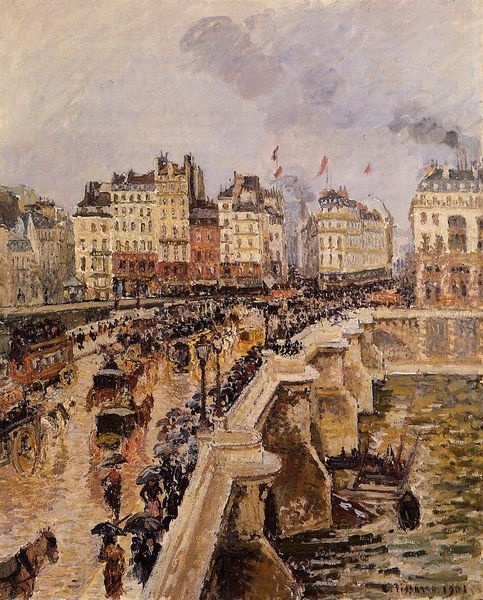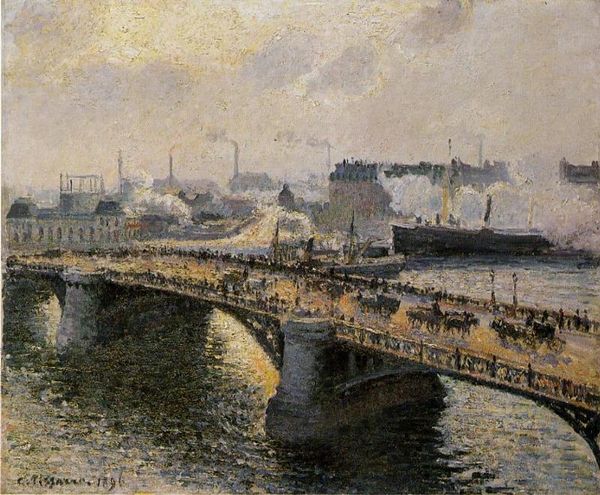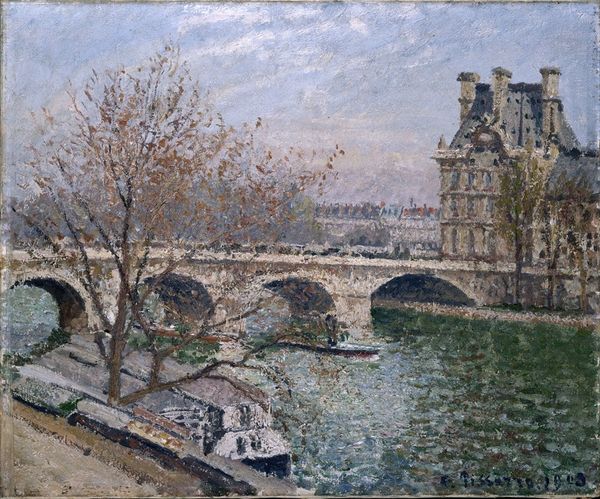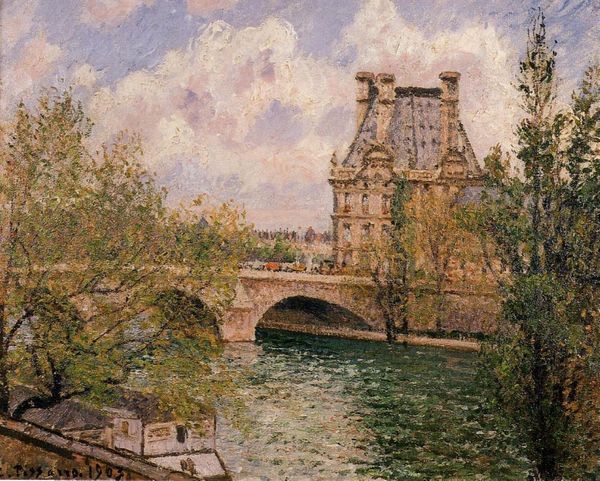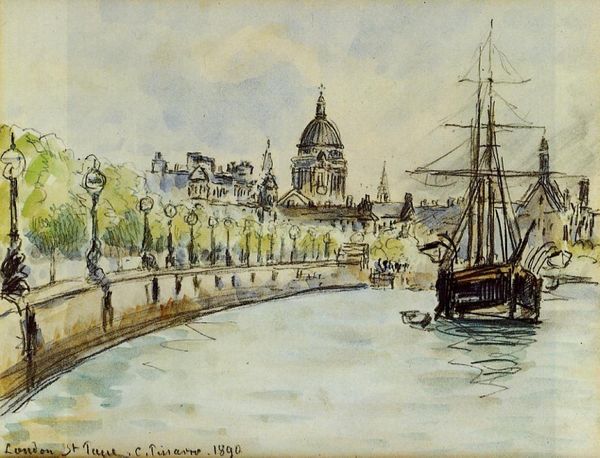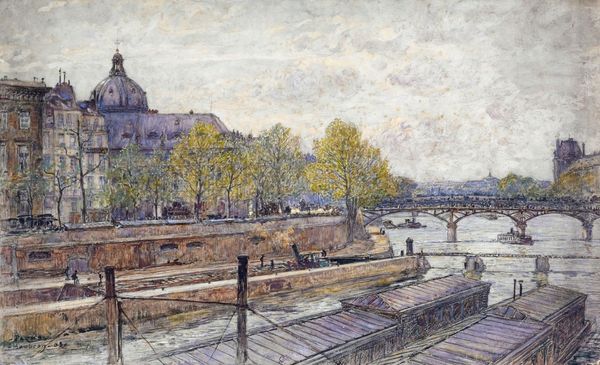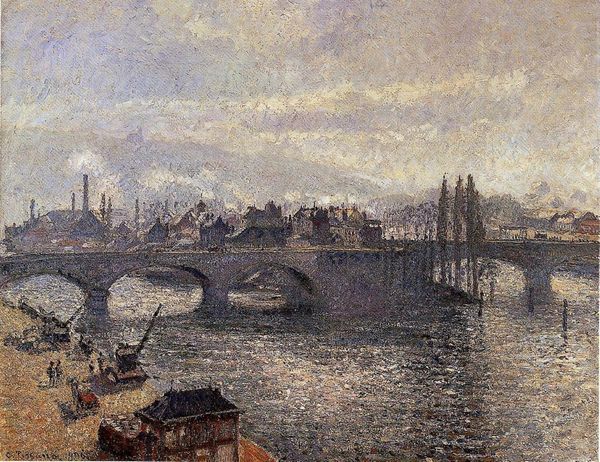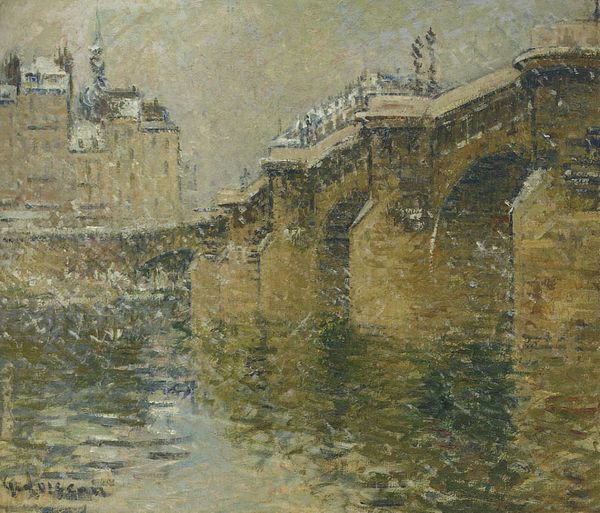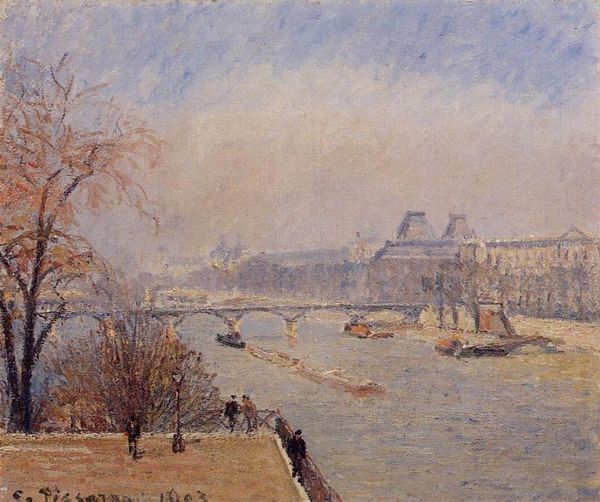
Copyright: Public Domain: Artvee
Curator: This is Frédéric Houbron’s oil on canvas, “Le quai de l’Hôtel-de-Ville et le pont Louis-Philippe,” painted in 1899. It presents a classic Parisian cityscape in the Impressionist style. Editor: Immediately, I notice how subdued the color palette is, almost monochromatic. It creates a quiet, contemplative atmosphere, despite the bustling subject matter. Curator: Exactly. Houbron's piece fits within a larger tradition of cityscape painting that flourished with urbanization, documenting urban spaces and experiences, particularly in late 19th-century Paris. Think of the political implications here: How did art help to define Parisian identity during this epoch of massive expansion and technological development? Editor: And who gets to define that identity? We're seeing the Seine, yes, a key element of the city's infrastructure and lifeblood, but it is worth thinking about the relationship of the working class to the leisure class within the city itself and the art world at this time. Where and who are they, visible or invisible? Curator: He focuses on capturing the play of light on the water and the buildings, characteristic of plein-air painting. Note how the brushstrokes are loose and broken. It departs from the academic realism of previous eras. Editor: I see the hazy atmosphere softening the rigid geometry of the architecture, offering a dreamlike lens through which to view urban modernity, making this city an idea instead of only representing a place. There's also a stillness here—perhaps suggesting the alienation one can feel in a major city? I keep coming back to how little individual presence there is here; just one figure, solitary, in that boat, the scene dominated by architecture instead of figures populating the cityscape. Curator: Well, Impressionism favored fleeting moments, perceptions over precise renderings. So, the emphasis is more on capturing a feeling than documenting specific individuals or events. Consider what it means that so many painters embraced industrial spaces as aesthetic, acceptable locations for making art. Editor: Perhaps this captures something essential of the Belle Époque: progress intertwined with underlying currents of anonymity, as both hopeful and uneasy aspects of modernization become intertwined. A city made both for and by all, in an environment designed for collective public enjoyment but offering limited representation. Curator: It’s interesting how our perspectives lead to such different interpretations! I think, overall, the piece captures a critical period of societal and aesthetic evolution, marking modern life as it unfolded in the visual world of art history. Editor: I appreciate how it invites us to think about whose perspectives are privileged within that grand narrative, and whose are sidelined and obscured within these spaces of artistic legacy.
Comments
No comments
Be the first to comment and join the conversation on the ultimate creative platform.
